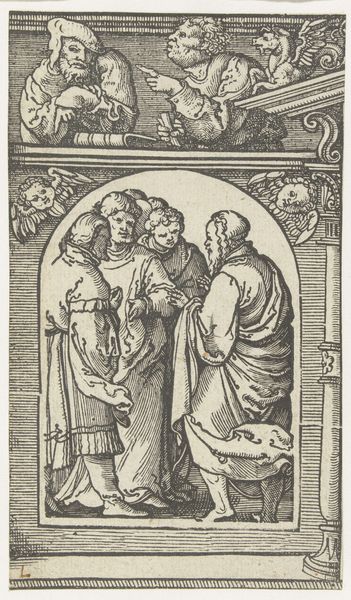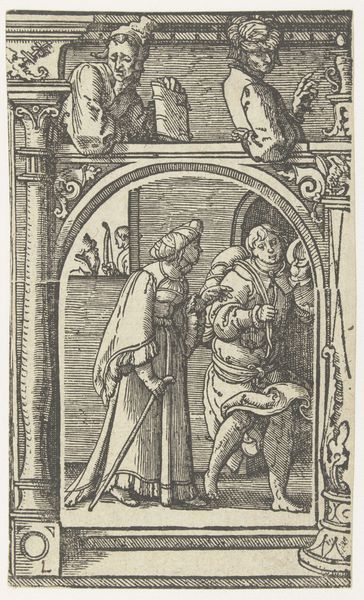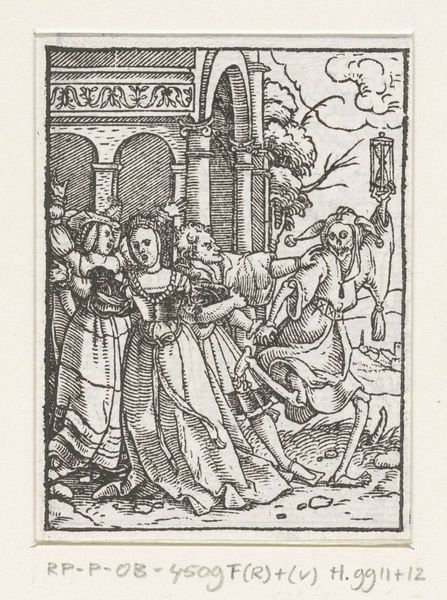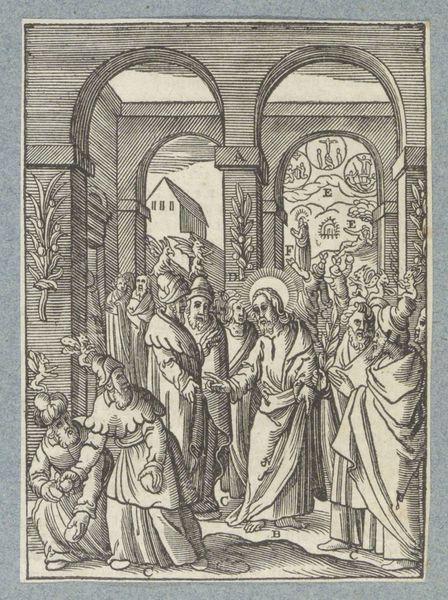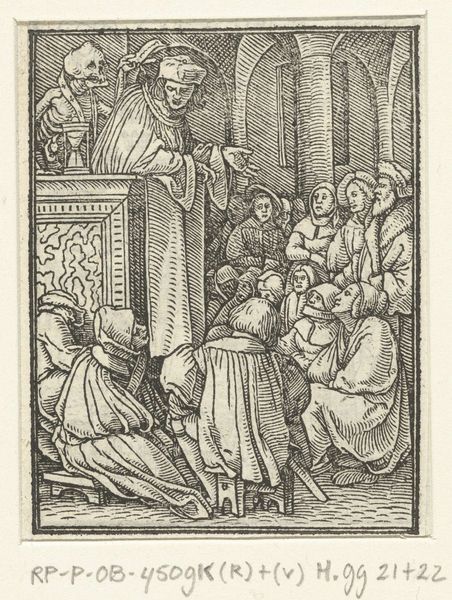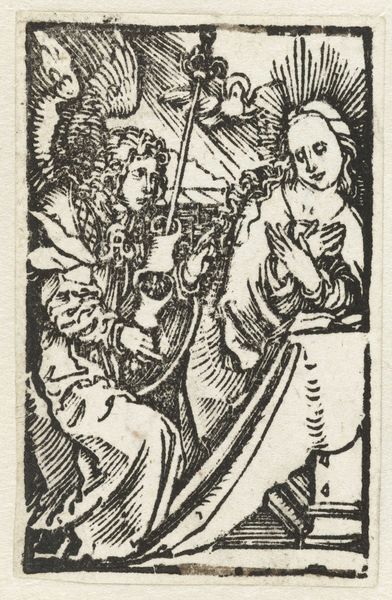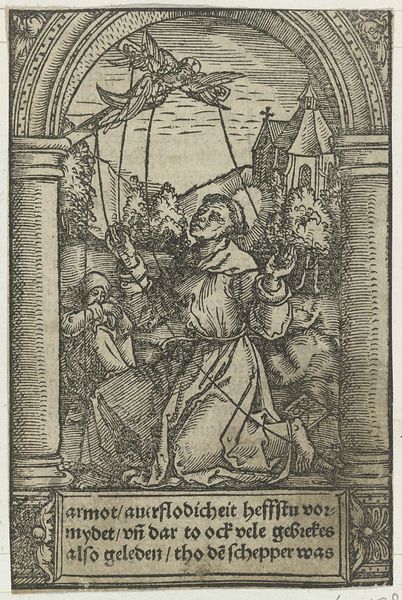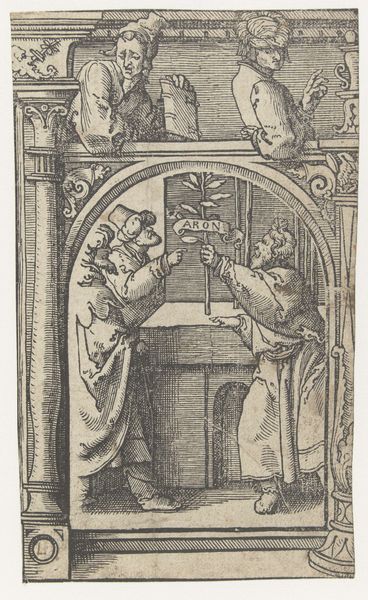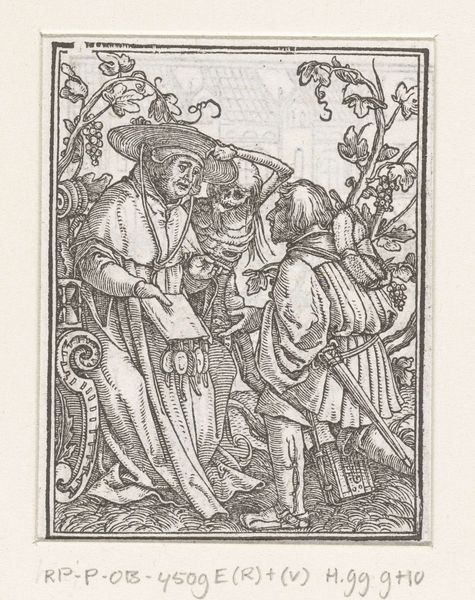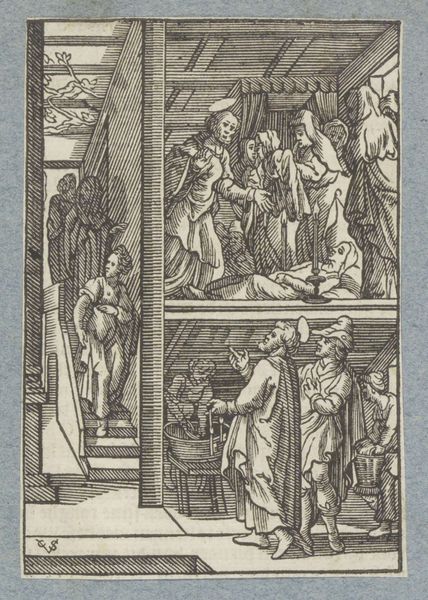
drawing, print, ink, woodcut, engraving
#
drawing
#
narrative-art
# print
#
pen illustration
#
pen sketch
#
figuration
#
ink
#
pen-ink sketch
#
woodcut
#
pen work
#
history-painting
#
italian-renaissance
#
engraving
Dimensions: height 149 mm, width 86 mm
Copyright: Rijks Museum: Open Domain
Editor: This is an intriguing piece! “Triumph of David,” created between 1525 and 1530 by an anonymous artist. It's an ink drawing and print housed at the Rijksmuseum. I’m struck by how theatrical it feels, like a scene from a play. The way the figures are positioned, the onlookers above… It's almost a stage. How do you interpret the social dynamics at play here? Curator: That "theatrical" feel is key, I think. Consider the power dynamics inherent in depictions of triumph during the Renaissance. Who gets to be celebrated, and what narratives are being reinforced? David, often seen as a symbol of righteous rule, here might also represent the consolidation of power during a time of significant social upheaval. Note the women and other figures surrounding him, their gazes fixed, participating, or even subdued? Whose voices are amplified, and whose are marginalized in this visual narrative? Editor: It’s true. They almost look like props. It raises questions about agency and representation. Are they simply there to witness and validate David's triumph, or is there something more to their presence? Curator: Exactly! And how does the choice of medium – a print, easily reproducible – impact the message? It suggests a desire for wide dissemination, perhaps to reinforce certain ideologies. Think about who would have had access to this image and how that would have shaped their understanding of power, gender, and social roles. We might consider the gaze in relation to performance and audience to unearth intersectional understanding of the piece. Editor: That's a really interesting point. The accessibility of prints versus unique paintings would definitely change its social impact. The layers of interpretation make this piece so compelling! I see it as a complex interplay of power, representation, and social context within the Italian Renaissance. Curator: Indeed, by questioning whose story is being told, and how, we begin to dismantle the simplistic notion of "triumph" and recognize the intricate, often fraught, realities of power and representation.
Comments
No comments
Be the first to comment and join the conversation on the ultimate creative platform.
